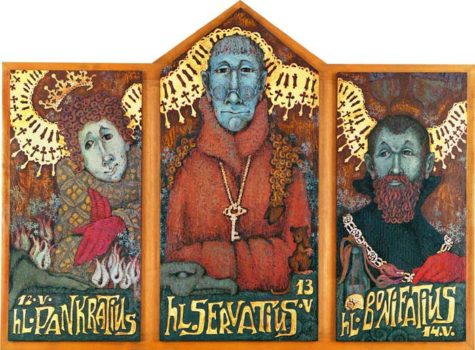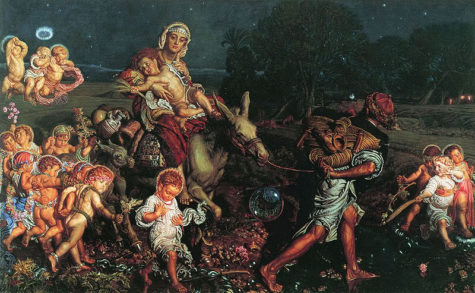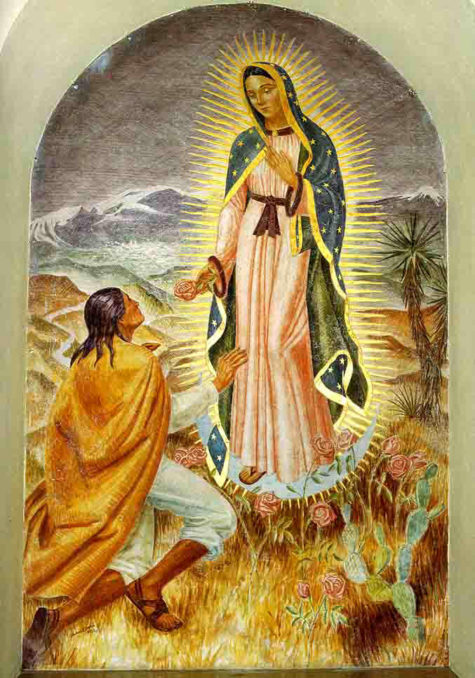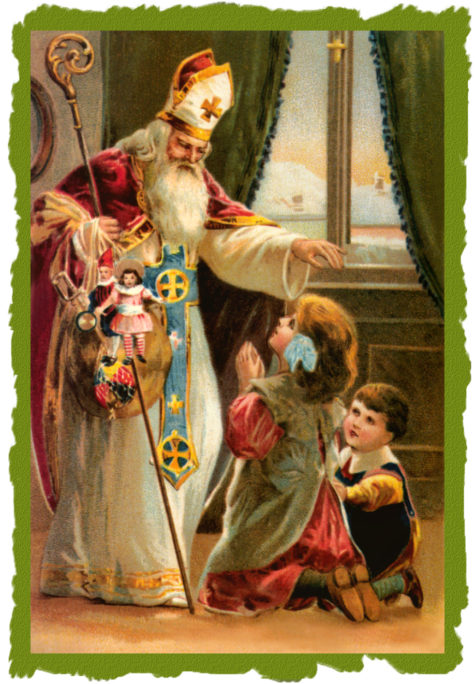Saint Days
May 11, 12, and 13 are the feast days of Saints Mamertus, Pancras, and Gervais. These three are known as the Three Chilly Saints not because they were cold during their lifetimes, but because these days bring a brief spell of colder weather in many years, including the last nightly frosts of the spring, and are traditionally the coldest of the month.
English and French folklore (and later American) held that these days would bring a late frost. In Germany, they were called the Icemanner, or Icemen Days, and people believed it was never safe to plant until the Icemen were gone. Another bit of folklore claimed:
“Who shears his sheep before St. Gervatius’s Day loves more his wool than his sheep.”
In Sweden, the German legend of the ice saints has resulted in the belief that there are special “iron nights,” especially in the middle of June, which are susceptible to frost. The term “iron nights” (järnnätter) has probably arisen through a mistranslated German source, where the term “Eismänner” (ice men) was read as “Eisenmänner” (iron men) and their nights then termed “iron nights,” which then became shifted from May to June.
To the Poles, the trio are known collectively as zimni ogrodnicy (cold gardeners), and are followed by zimna Zośka (cold Sophias) on the feast day of St. Sophia which falls on May 15. In Czech, the three saints are collectively referred to as “ledoví muži” (ice-men or icy men), and Sophia is known as “Žofie, ledová žena” (Sophia, the ice-woman).
Alternative Saints:
St. Mamertus is not counted among the Ice Saints in certain countries (Southern Germany, Austria, Northern Italy, Czech Republic, etc.), whereas St. Boniface of Tarsus belongs to them in other countries (Flanders, Liguria, Czech Republic etc.) as well; St. Boniface’s feast day falling on May 14. St. Sophia, nicknamed Cold Sophia (German kalte Sophie) on May 15 can be added in Germany, Alsace (France). In Poland and the Czech Republic, the Ice Saints are St. Pancras, Saint Servatus and St. Boniface of Tarsus.
Related Content:
- A nice little spell, Ice Saint Toxic People Banishing Spell, can be found at The Book of Shadows
Note:
The introduction of the Gregorian Calendar in 1582 involved skipping 10 days in the calendar, so that the equivalent days from the climatic point of view became May 22–25.
Found at: Almanac.com and wikipedia
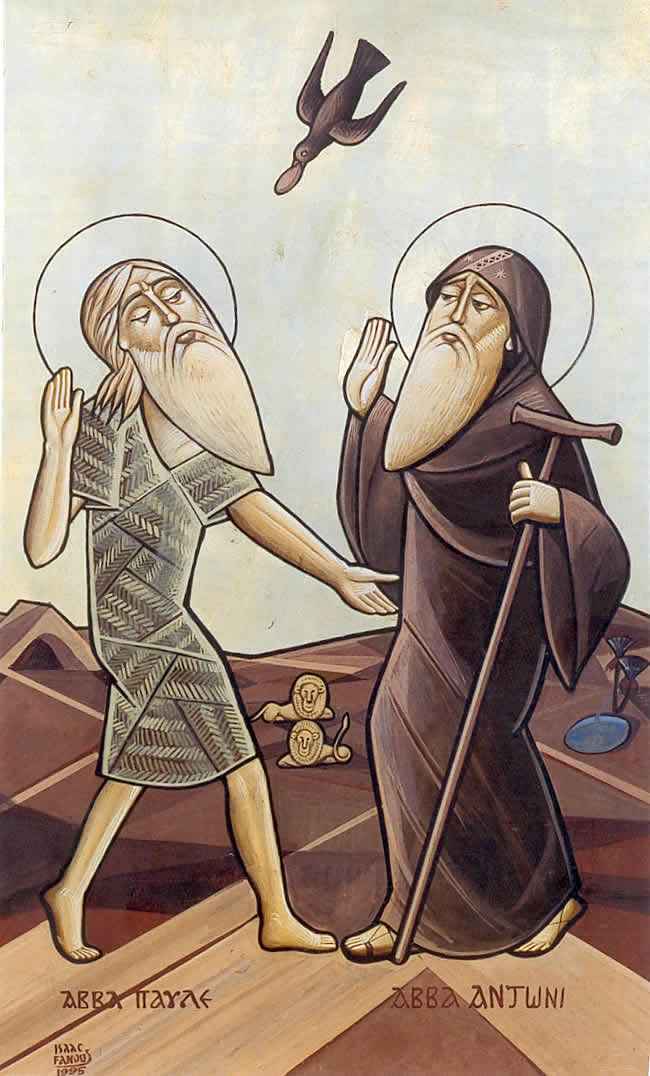 January 25 is St. Paul’s day, a festival of the Roman and English churches in commemoration of St. Paul. This day is thought to be prophetic as to the weather of the year:
January 25 is St. Paul’s day, a festival of the Roman and English churches in commemoration of St. Paul. This day is thought to be prophetic as to the weather of the year:
“If St. Paul’s day be fair and clear, It doth betide a happy year; If blustering winds do blow aloft. Then wars will trouble our realm full oft; And if it chance to snow or rain, Then will be dear all sorts of grain.”
In Germany when the day proved foul the common people used to drag the images of St. Paul and St. Urban in disgrace to duck them in the river.
- On the day of the conversion of St . Paul, (January 25th,) the four winds wrestle and the winner will blow most of the year. (Belgium.)
- If it rains on St. Paul’s day there will be plenty of mushrooms. (Bohemia.)
Other omens and folklore for St Paul’s day include the following:
- Fire will not burn a man born on St . Paul’s day, but if a woman who was born on that day is burned, the wound will never heal.
- Interestingly, in Sicily, it doesn’t matter what day you were born on – if you are a man fire will not burn you, but if you are a woman it will not only burn, it will eventually cause your death!
On a more positive note:
- If you set your hens to hatch on Paul’s day, they will become good layers.
Found in: Encyclopedia of superstitions, folklore, and the occult
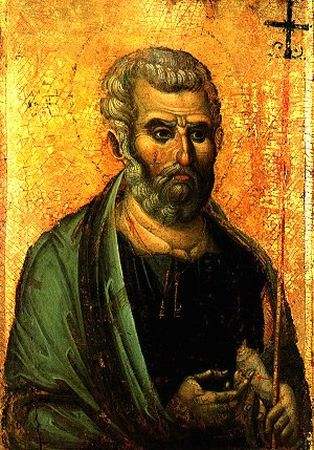 There are two feast days in the year which are dedicated to St Peter. January 16, and June 29 (which is the feast of Saints Peter and Paul). What follows is lore and superstition surrounding St Peter’s day:
There are two feast days in the year which are dedicated to St Peter. January 16, and June 29 (which is the feast of Saints Peter and Paul). What follows is lore and superstition surrounding St Peter’s day:
- No building should ever be begun on St . Peter’s day. It will never prosper.
- The Wallachians say that on St. Peter’s day all roads are guarded by serpents, and whoever kills one on that day will be lucky all the year.
- If it rains on St. Peter and St. Paul, there will be plenty of mushrooms.
- If you set your hens to hatch on Peter’s and Paul’s day, they will become good layers.
- Make nests for the hens on St . Peter’s day, And many ‘s the egg that they will lay.
Collected from various sources
Feast of the Holy Innocents, also called Childermas, or Innocents’ Day, festival celebrated in the Christian churches in the West on December 28 and in the Eastern churches on December 29 and commemorating the massacre of the children by King Herod in his attempt to kill the infant Jesus (Matthew 2:16–18). These children were regarded by the early church as the first martyrs, but it is uncertain when the day was first kept as a saint’s day. At first it may have been celebrated with Epiphany, but by the 5th century it was kept as a separate festival. In Rome it was a day of fasting and mourning.
It was one of a series of days known as the Feast of Fools, and the last day of authority for boy bishops. Parents temporarily abdicated authority. In convents and monasteries the youngest nun and monk were allowed to act as abbess and abbot for the day. These customs, which mocked religion, were condemned by the Council of Basel in 1431.
In medieval England the children were reminded of the mournfulness of the day by being whipped in bed in the morning; this custom survived into the 17th century. See Dyzymas Day.
The day is still observed as a feast day and, in Roman Catholic countries, as a day of merrymaking for children.
Source: Britannica.com
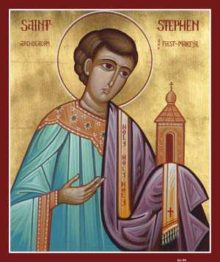 St Stephen’s Day, celebrated every year on 26 December, draws together a number of solstice traditions. We have already learned of the ancient practice of hunting the wren, the King of all birds (Day of the Wren), and of displaying the tiny corpse around the villages throughout Britain and Ireland. The origins of this custom probably date back to the time when kings were slaughtered after a year in office – and in France up until the seventeenth century the first person to kill and display the body of the wren was chosen king for a day at the time of the Feast of Fools.
St Stephen’s Day, celebrated every year on 26 December, draws together a number of solstice traditions. We have already learned of the ancient practice of hunting the wren, the King of all birds (Day of the Wren), and of displaying the tiny corpse around the villages throughout Britain and Ireland. The origins of this custom probably date back to the time when kings were slaughtered after a year in office – and in France up until the seventeenth century the first person to kill and display the body of the wren was chosen king for a day at the time of the Feast of Fools.
St. Stephen himself, according to legend, was once a servant of the biblical King Herod. When he saw the star of the nativity he sought to know more of the Child of Wonder born in the stable, and as a result changed his allegiance to a new king.
The association of the wren killing with St. Stephen’s Day may well derive from a legend of the saint’s visit to Scandinavia. In this story Stephen, having been captured by soldiers, was about to make his escape when the wren uttered its noisy song and awoke his guards – for which reason the wren is said to be unlucky and it is, indeed, considered a misguided act to kill the bird on any other day of the year.
St. Stephen’s Day in Wales is known as Gŵyl San Steffan. One ancient Welsh custom, discontinued in the 19th century, included bleeding of livestock and “holming” by beating with holly branches of late risers and female servants. The ceremony reputedly brought good luck.
St. Stephen’s Day (Sant Esteve) is a traditional Catalan holiday. It is celebrated with a big meal including canelons. These are stuffed with the ground remaining meat from the escudella i carn d’olla, turkey, or capó of the previous day.
Stephanitag is a public holiday in mainly Catholic Austria. In the Archdiocese of Vienna, the day of patron saint St. Stephen is even celebrated on a Sunday within the Octave of Christmas, the feast of the Holy Family. Similar to the adjacent regions of Bavaria, numerous ancient customs still continued to this day, such as ceremonial horseback rides and blessing of horses, or the “stoning” drinking ritual celebrated by young men after attending church service.
Another old tradition was parades with singers and people dressed in Christmas suits. At some areas these parades were related to checking forthcoming brides. Stephen’s Day used to be a popular day for weddings as well. These days a related tradition is dances of Stephen’s Day which are held in several restaurants and dance halls.
In Finland the most well known tradition linked to the day is “the ride of Stephen’s Day” which refers to a sleigh ride with horses. These merry rides along village streets were seen in contrast to the silent and pious mood of the preceding Christmas days. This tradition more than likely relates to the following legend about this saint, who is generally called the first Christian martyr.
The story is as follows:
St Stephen is said to have reached Sweden, and to have established a church there from which he rode forth to preach and teach the Christian message. To enable him to travel the great distances through often inhospitable country he had a string of five horses two red, two white, and one dappled. Whenever one of these became tired Stephen would simply mount another. However, as he was traveling through a particularly deep stretch of forest, he was set upon by brigands, who killed him and tied his body to the back of an unbroken colt. This beast, bearing the saint’s body, galloped all the way back to Stephen’s home. His grave there subsequently became a place of pilgrimage and perhaps because of the association with horses, sick beasts were brought there for healing. Stephen is still known as the patron saint of horses to this day.
The themes of St. Stephen’s day, then, have to do with death and resurrection and animals. The former makes it particularly appropriate that it is on this day that the Mummer plays are most often performed.
From: The Winter Solstice
December 12th is the feast of Our Lady of Guadalupe, patroness of the Americas, unborn children, and the New Evangelization. The day is particularly special for Americans of Mexican heritage, as it honors the belief that Jesus’ mother Mary, who is Mexico’s patron saint, appeared to a man in Mexico City twice in 1531.
Our Lady of Guadalupe is unlike any other apparition of the Virgin Mary. First, it is the only apparition where Our Lady left a miraculous image of herself unmade by human hands. Second, it is the only universally venerated Madonna and Child image where Our Lady appears pregnant instead of holding the Infant Jesus.
Feast Day Celebration Ideas:
Many parishes with large Hispanic populations have a special celebration leading up to the December 12th feast of Our Lady of Guadalupe. Find one of these celebrations happening in your local community and join in the celebration. Some parishes will also host a reception or party in honor of the feast day.
If not, hold your own celebration of Our Lady by inviting friends and family to your home for a traditional Mexican meal. Decorate your table with colorful flowers in bright reds and pinks, blues and greens, and together recite the prayer (below) to Our Lady written by Pope St. John Paul II.
Prayer To Our Lady of Guadalupe:
“O Immaculate Virgin, Mother of the true God and Mother of the Church!, who from this place reveal your clemency and your pity to all those who ask for your protection, hear the prayer that we address to you with filial trust, and present it to your Son Jesus, our sole Redeemer.
Mother of Mercy, Teacher of hidden and silent sacrifice, to you, who come to meet us sinners, we dedicate on this day all our being and all our love. We also dedicate to you our life, our work, our joys, our infirmities and our sorrows. Grant peace, justice and prosperity to our peoples; for we entrust to your care all that we have and all that we are, our Lady and Mother. We wish to be entirely yours and to walk with you along the way of complete faithfulness to Jesus Christ in His Church; hold us always with your loving hand.
Virgin of Guadalupe, Mother of the Americas, we pray to you for all the Bishops, that they may lead the faithful along paths of intense Christian life, of love and humble service of God and souls. Contemplate this immense harvest, and intercede with the Lord that He may instill a hunger for holiness in the whole people of God, and grant abundant vocations of priests and religious, strong in the faith and zealous dispensers of God’s mysteries.
Grant to our homes the grace of loving and respecting life in its beginnings, with the same love with which you conceived in your womb the life of the Son of God. Blessed Virgin Mary, protect our families, so that they may always be united, and bless the upbringing of our children.
Our hope, look upon us with compassion, teach us to go continually to Jesus and, if we fall, help us to rise again, to return to Him, by means of the confession of our faults and sins in the Sacrament of Penance, which gives peace to the soul.
We beg you to grant us a great love for all the holy Sacraments, which are, as it were, the signs that your Son left us on earth.
Thus, Most Holy Mother, with the peace of God in our conscience, with our hearts free from evil and hatred, we will be able to bring to all true joy and true peace, which come to us from your son, our Lord Jesus Christ, who with God the Father and the Holy Spirit, lives and reigns for ever and ever. Amen.”
~Pope John Paul II’s Prayer to Our Lady of Guadalupe
~Mexico, January 1979
Many countries in Europe celebrate the Feast of Sinterklaas, or St. Nicholas, on the eve of December 6. After dinner, families hunt for their presents, following clues in funny, anonymous poems. They also eat candies and cookies, especially spicy crispy ginger-cookie figures formed in a traditional wooden mold.
The legend of St. Nicholas is, like the lives of many saints, shrouded in mystery. We know that he was the bishop of Myra in Lycia, part of Asia Minor, during the fourth century. He is credited with saving three sisters from lives of ill repute by throwing bags of gold into their house (some say down the chimney, others say through the window) to provide for their dowries.
In many places in the United States and abroad, children still hang their stockings by the chimney or place their shoes by the window for St. Nicholas to fill them with presents and sweets on the eve of his feast day. He is considered the patron saint of children.
Source: Almanac.com
